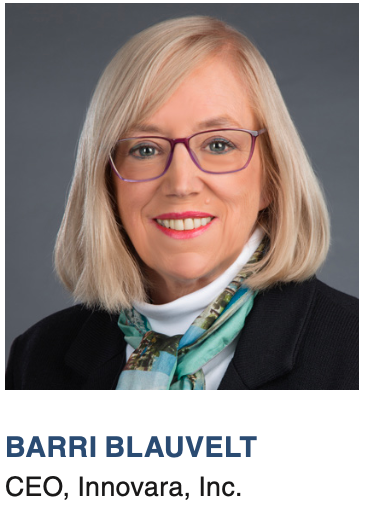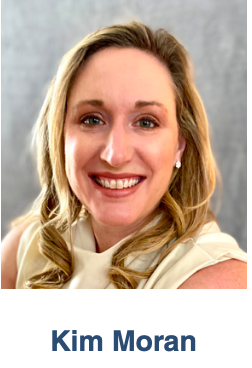Upward Mobility: Optimizing Your Pharma T-Profile
With lessons and perspectives from the field, the importance of harnessing the right combination of skills to advance up and across career ladders is explored.

When it comes to climbing the career ladder, you should take a long look at the depth and breadth of your experience, advises Adele Gulfo, chief commercial and business development officer for Sumitovant Biopharma, a global biopharmaceutical company leveraging a technology-enabled approach to accelerate development of potential therapies for unmet patient conditions. Also a board member of three life sciences companies and a Pharmaceutical Executive editorial advisory board member, Gulfo believes developing knowledge in multiple areas makes professionals well-rounded and better prepared to advance in their careers. For anyone moving from the bench to commercial operations, as she did, and eventually to the executive suite—especially women—she offers this advice:
“Develop your T-profile. In a T-profile, you have both deep expertise in a field, plus breadth to be able to work and collaborate with others in diverse areas. Step away from your day-to-day job, particularly if you are in a nonoperational role, to get operational experience. When I was president of Pfizer’s primary care business, I influenced key decisions for several strategic products going into large multicenter trials that would have huge financial impact on the company, because I was able to understand and help to make decisions on the clinical development of the product.”
What is a T-profile?
A T-profile has long been recognized as critical to the sciences and innovation. According to Harvard University IT Academy: “T-shaped individuals have both breadth in how to collaborate and innovate across disciplines and depth in specific areas of expertise. What makes T-shaped individuals so effective at what they do is that they are immensely empathetic, having a keen sense of others’ perspectives. A T-shaped professional can see through others’ eyes, walk in their shoes, listen actively, and create solutions that build on their ideas.”1
In this model, the stem of the T is your deep expertise in your current role. The top of the T is your ability to apply knowledge across impactful situations and work effectively with other functions.

In Gulfo’s case, she made moves that enabled her to become part of a team for a major new product launch project (Lipitor), working with other specialists in marketing, access, sales, distribution, finance, manufacturing, and regulatory. She not only represented the science but made significant contributions especially to commercial strategy. This resulted in an unprecedented uptake in the market, enabling treatment of millions of patients in record time. With that, Lipitor became known as the industry’s most successful launch. When she took over as head of marketing, Gulfo had the team develop detailed customer marketing plans vs. the typical product plans of most pharma companies at that time. This approach was one of the industry’s first major, successful examples of a company deeply vested in the customer experience, with the brand rocketing to become the market leader.
That got Gulfo noticed, and eventually she was asked to head up the newly formed cardiovascular team at AstraZeneca and lead the late-stage development and launch of Crestor, which became another multibillion-dollar blockbuster product. Gulfo brought a fresh perspective to the opportunity. She led with questions and urged out-of-the-box thinking to reimagine the conventional approach to the launch of a new drug.
Developing your T-profile as a future leader
How do you make the jump from one area of deep expertise into higher levels of leadership, particularly making a role switch in the process? Gulfo’s advice is to gain T-profile experience by making your aspirations known.
“Go after opportunities to volunteer for something really impactful, to work on a challenging project or take on a risky, high-profile project,” she says. “These are the defining projects that get you noticed by others who can make a difference in your career.”
In short, having a strong T-profile helps you to become “a deep problem-solver in your home discipline, while being capable of interacting with and understanding [other] specialists from a wide range of disciplines and functional areas.”2
To develop your individual T-profile, pick a cross-functional project that will get you the kind of exposure you need to connect with other areas. Don’t be afraid to ask others to help you understand what they do conceptually. Along the way, learn their internal vocabulary.
Imagine you recently joined a project team representing the medical department. You are excited to be part of this important initiative led by the marketing department. In fact, you have been studying for your MBA and welcome the chance to apply your learnings to this commercially important project. Longer term, you may even aspire to move into commercial operations.
But if the brand marketer mentions a functional term you don’t understand in the first meeting, don’t be afraid to ask for a private meeting afterward. Let them know your aspirations and enlist their help to guide you to be a more effective contributor to the project. Sometimes the simple process of doing that is enough to get you on the radar. Don’t worry about being perfect right from the start. Be willing to ask questions.
Become a lifelong learner, networker, and strategic contributor
Just participating in a multidisciplinary team of importance to the company is not enough. You need to show that you are eager to learn from others and put that learning to work, using your interactions to develop powerful networks across the company, aligning to advance business strategy.

Kim Moran, head of US insights to impact at UCB, has an insatiable appetite for learning, in addition to being highly strategic. She leveraged her T-profile to build robust networks, which resulted in a meteoric rise from a PhD in neuroscience, to a medical science liaison (MSL) position at a startup life sciences company, to executive leadership.
“I am an ‘ever-learner,’” says Moran. “Having that curiosity and seeking to understand and learn things from all different disciplines sets the groundwork for developing a great T-profile. When I moved to UCB as a medical director, I was able to get really close to marketing, regulatory, legal, and compliance.”
Sponsorship should also be an aim of networking. More than being a mentor, an executive sponsor can recommend you for a high-impact project or to fill a critical opening. When that happens, you’re not in the room. You don’t even know there’s an opportunity or opening to vie for. In that moment of truth, you need the executive sponsor to put you forward. And if the other executives don’t know who you are, your sponsor can give examples of your vital and strategic contributions.
In Moran’s case, by working on and leading high-visibility, multidisciplinary projects, one top executive saw early on that not only was she a great medic but that she understood strategy. From that moment onward, he became her sponsor, encouraging her to take on a variety of adjacent roles, including ones that never existed before in the company.

“I took a role leading mid- to long-term life-cycle management, where I took my scientific understanding—the deep part of the T—then asked, ‘How can we have the right regulatory strategy to pull off this life-cycle management?’” says Moran. “Next, I worked on developing new formulations, so I learned about technology and supply. After that, I learned marketing to be able to lead epilepsy at a global level.”
In her current role, Moran combines patient insights, analytics, and trends with finance to determine how to reallocate UCB’s resources faster to drive value. She attributes her ability to do so to her developing her T-profile.
“Because [of my T-profile], I understand the business, I understand numbers from the scientific basis, and I understand trends and data,” she says. “Finance was the last part of what I needed to learn. I was a little nervous at first, but I made it all come together to drive our digital transformation, to make our business faster and more impactful while understanding what causes variability. It has been an incredible journey.”
Bringing your T-profile to the top
As Moran realized early on, at some point, you don’t need to focus on deeper expertise. Instead, focus on how to lead and manage people, to bring the best out of everyone to work toward a common purpose.
David Epstein, former president of Novartis Global Oncology, eventually CEO of Novartis, and now executive partner of Flagship Pioneering, talks about how he got to where he is today: “The reality is that once you have developed a decent set of leadership skills, those are perfectly transferrable and applicable. For many jobs in my career, I had felt doubt. I knew I would be doing things that I had no previous exposure to. Sure, I was nervous, but that didn’t stop me from taking the job.”
As you think about your own future career, consider how you’ll develop your T-profile. It’s not only helpful, it’s essential. Just ask any successful executive in this industry. They may not know it as a T-profile, but they certainly can describe those experiences along the way that developed their ability to relate and contribute to cross-functional projects of importance, which helped to open the door to the next level of leadership.
Barri Blauvelt, CEO, Innovara, Inc.
References
- Harvard IT, https://itacademy.harvard.edu/faq/what-t-shaped-professional, accessed May 13, 2021.
- Ing D. T-shaped professionals, T-shaped skills, hybrid managers. Coevolving Innovations. Sept. 6, 2008. https://coevolving.com/blogs/index.php/archive/t-shaped-professionals-t-shaped-skills-hybrid-managers/ Accessed April 3, 2021.
